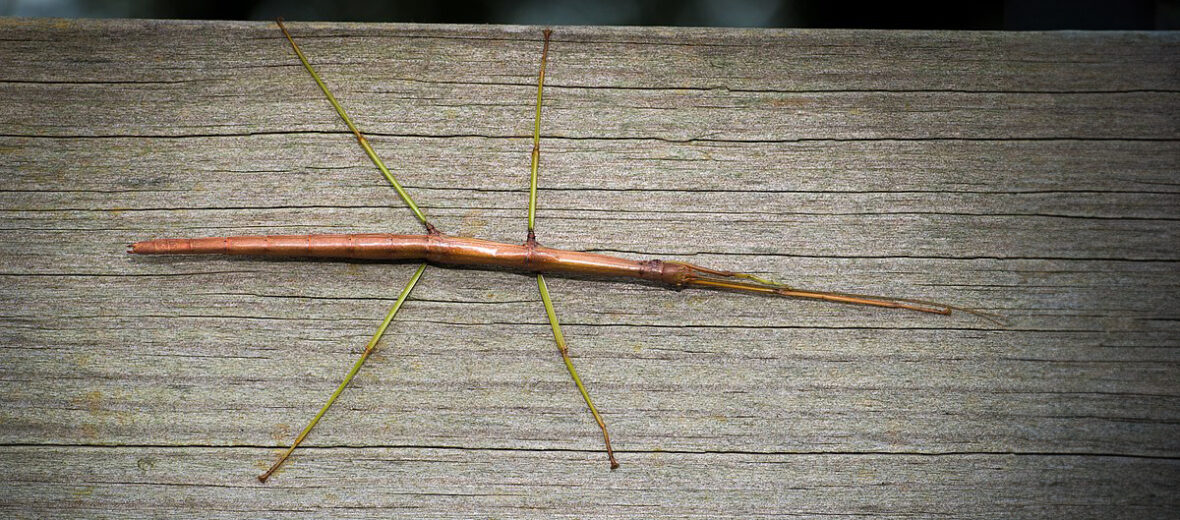
The common walkingstick, aka northern walkingstick or common stick insect, can be found throughout the United States and up into Canada. They are the only stick insect found in Alberta, Manitoba, Ontario, and Québec. Stick insects prefer deciduous forest habitats. These strange looking critters are abundant throughout their range and are not listed by the IUCN. However, they do face the threats of habitat loss and destruction, as well as poisoning via general use and agricultural pesticides.
First the Stats…
Scientific name: Diapheromera femorata
Length: Up to 3.75 inches
Lifespan: Up to 18+ months
Now on to the Facts!
1.) Females are larger than males by .75 inch.
2.) While feasting on various deciduous vegetation, they have a preference for the foliage from oak and hazelnut trees.
3.) These insects will eat only the tissue between the leaf veins. Thus skeletonizing the leaf.
4.) Their antennae measure 2/3rd the length of their body.
5.) Common walkingstick insects do not possess wings.
But wait, there’s more on the common walkingstick!
6.) Early-stage nymphs are typically found dwelling on American hazel, black cherry, and white oak.
7.) Adults favor black oak and black locust trees.
Did you know…?
Walkingstick insects are harmless. They don’t bite or sting.
8.) Due to their superb camouflage and the fact that they tend to feed high up in trees, these critters are seldom seen.
9.) Breeding happens in late summer after the nymph has gone through its final molt into adulthood.
10.) Females lay up to 150 eggs, at a rate of 3 eggs per day.
But wait, there’s still more on the common walkingstick!
11.) Eggs are dropped onto the forest floor, into leaf litter, where they’ll continue to develop over the course of several months. If there is a drier season, the eggs may take up to a year to hatch.
12.) The eggs that do hatch release juveniles that then scale the nearby tree and undergo up to 6 molts to reach adulthood.
13.) While mostly nocturnal (active at night), they can be active throughout the day too.
Now a Short Common Walkingstick Video!
Be sure to share & comment below! Also, check out the Critter Science YouTube channel. Videos added regularly!
Want to suggest a critter for me to write about? Let me know here.
Some source material acquired from: Wikipedia
Photo credit: Andrew C.



